
|
| |
|
|
|
|
 |
|
|
3rd Guards Mechanised Corps
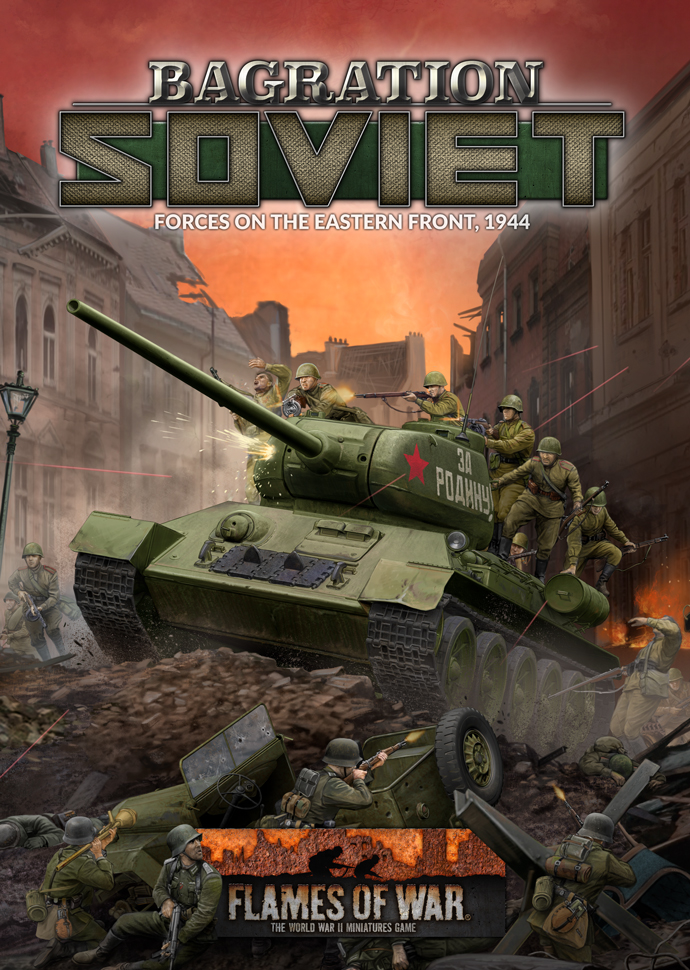 |
Soviet 3rd Guards Mechanised Corps during Operation Bagration
Bagration: Soviet
Led by the Oslikovskiy Cavalry-Mechanised Group, the Soviet 5ya Gvardeyskiy Tankovy Armiya (5th Guards Tank Army) struck as the Hammer or northern spearhead. Advancing rapidly through the marshes of Byelorussia they found themselves knocking on Borizov, Minsk’s northern door. Here in a town just east of Minsk they threatened to both encircle and destroy the German 4. Armee (4th Army).
During Operation Bagration the 3rd Guard Mechanised Corps (3-y Gvardeyskiy Mechanizirovanniy ‘Stlingradsko-Kirvorozhskiy’ Korpus) was one of the leading elements of the northern spearhead of the Soviet breakthrough towards Minsk.
|
|
They thrust through the German lines on 23 June and made for the important bridgeheads, defeating or bypassing German blocking forces, before finally taking Molodechno on 4 July.
The 3rd Guards Mechanised Corps was part of the Oslikovskiy Cavalry- Mechanised Group. This group, assembled for its high speed and mobility, teamed the 3rd Guards Mechanised Corps with the 3rd Guard Cavalry Corps. The 3rd Guards Mechanised Corps was formed from the 4th Mechanised Corps in December 1942. It went on to fight south of Stalingrad during Operation Uranus and where it fought itself to a stand still in March 1943. The exhausted corps went into Stavka reserves to be refitted and rested. It was upgraded to the new 1943 Mechanised Corps standards during this time.
The corps was put into reserve during the Battle for Kursk in mid 1943, but wasn’t committed to the offensive until exploitation phase of the battle in August. They then took part in the drive on the Dnepr in late 1943 with the 47th and 37th Armies. In November 1943 it was once more withdrawn to STAVKA reserves for refitting and rest.
During 1944 it received its lend lease M4A2 Sherman and Valentine tanks in preparation for Operation Bagration.
|
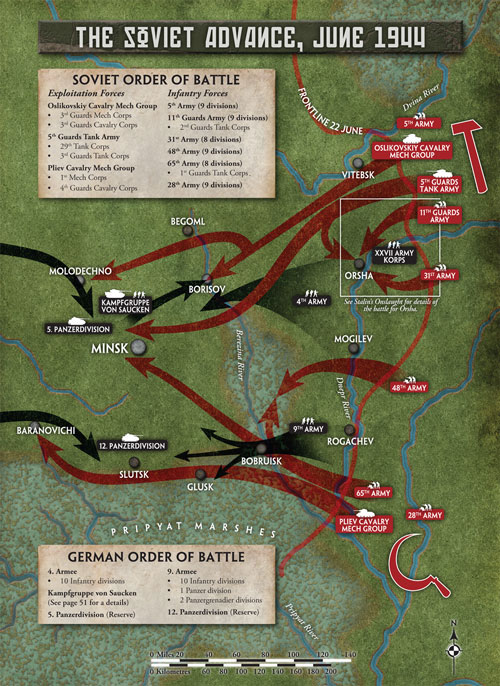 |
| During the planning for Operation Bagration the Oslikovskiy Cavalry-Mechanised Group was assigned the role of leading the drive through the gap created by the 3rd Byelorussian Front at Bogushevsk. It was to make for the Berezina River south of Borisov, where it was to establish bridgeheads. It was to fight as a small tank army, with the mobility of the mounted cavalry providing mobile infantry support vital in the Byelorussian marshlands. |
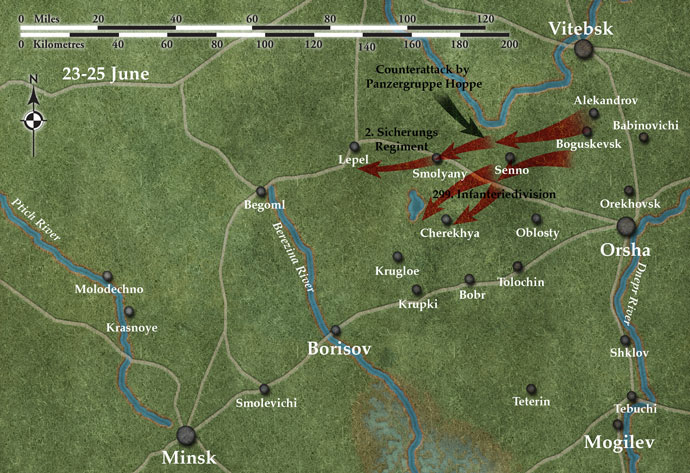 |
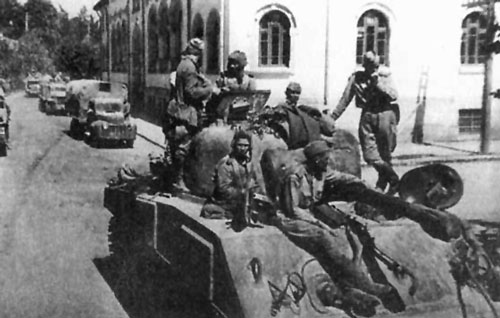 |
The Oslikovskiy Cavalry- Mechanised Group’s drive west began on 23 June after wide gaps had been smashed in the German lines by the initial Soviet assault. They drove west towards Bogushevsk through the breach made by the 5th Army against the German VI Korps. The 9th Mechanised Brigade, supported by the 45th Guards Tank Regiment, 10th Guards Motorcycle Battalion and two batteries of the 1823rd SU Regiment, all from the 3rd Guards Mechanised Corps, drove west towards Senno. Further corps units followed behind, including the 8th Mechanised Brigade who secured the ground taken. |
|
The Germans quickly counterattacked with Panzergruppe Hoppe from the north, but the anti-tank guns of the 3rd Guards Mechanised Corps held them off. The Soviets claimed four Panthers for the lost of just one 57mm ZIS-2 gun.
The cavalry, tanks and mechanised troops of the Oslikovskiy Cavalry-Mechanised Group moved between the 39th and 5th Armies and headed towards Senno.
|
|
At 0400, 24 June, the 3rd Guards Cavalry Corps clashed with German 95. Infanteriedivision. By the end of the day the Soviet 5th Army’s infantry had driven back the remnants of the German VI Korps back to Bogushevsk allowing the 3rd Guards Mechanised Corps to push on.
On 25 June the 3rd Guards Cavalry Corps overran the German 299. Infanterie Division. By 0700 the Oslikovskiy Cavalry-Mechanised Group as a whole had 120 tanks 4km west of Bogushevsk. During the evening cavalry and tanks attacked Smolyany, defended by the German 2nd Security Regiment, 30km west of Senno. The Oslikovskiy Cavalry-Mechanised Group had swept through the gap at Bogushevsk and had cut the Lepel-Orsha rail line while the German VI Korps continued to collapsed before them.
|
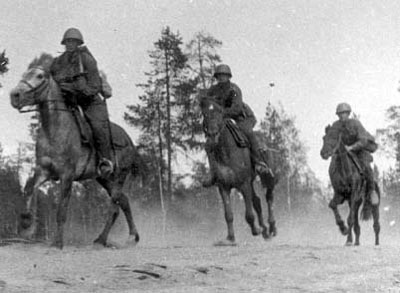 |
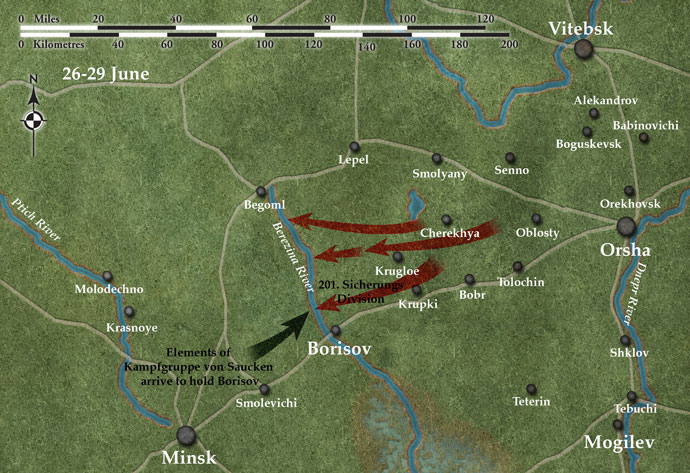 |
| During the fighting for Bogushevsk the 3rd Guards Mechanised Corps worked with the 63rd and 277th Rifle divisions of the 72nd Rifle Corps, 5th Army before joining the drive westwards towards Smolyany. Senno and Cherekhya were finally cleared of enemy on 26 June. The 3rd Guards Mechanised Corps has advanced 35km during the day to clear the town. |
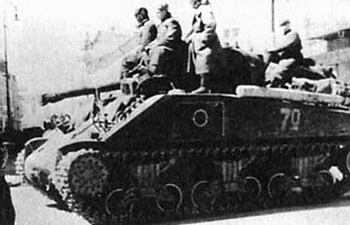 |
By 28 June the 3rd Guards Mechanised Corps had chased the German 201st Security Division all the way to the Berezina River. The corps’ 35th Guards Tank Brigade and 35th Guards Motor Rifle Battalion (submachine-gun armed), supported by further corps elements, formed a forward detachment and crossed a canal and then the Berezina River at 0900 on 28 June. Sappers built a light bridge to allow light trucks, and a heavier bridge to allow the tanks and some towed ZIS-3 guns to cross. The corps had advanced 180km in five days, and were the first Soviet unit across the Berezina River.
The 9th Guards Mechanised Brigade, with corps support, crossed the Essa River south of Lepel on 28 June.
|
|
Later in the day Sappers built a small wooden bridge across the Berezina north of Borisov, which allowed the 9th Guards Mechanised Brigade to cross. A pontoon bridge allowed the tanks of the 35th Guards Tank Brigade to cross a little later. The 8th Guards Mechanised Brigade moved from Bobr and crossed the Berezina near Borisov.
On the morning of 29 June the remainder of the 3rd Guards Mechanised Corps advanced quickly to the Berezina River at Brodi and began to attack the west bank.
|
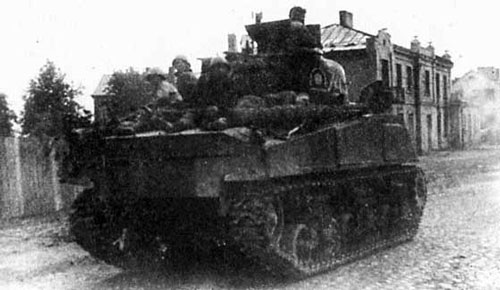 |
| Several bridgeheads were established allowing the Corps to advance 10km south to Belgomli. |
The speedy advance of the 5th Army and Oslikovskiy’s Cavalry-mechanised group threatened the rear of the Germans around Borisov by 30 June.
On 2 July the 8th Guards Mechanised Brigade reached the river near Molodechno. The brigade sent a small forward detachment across the river to hold the bridgehead while the rest of the 3rd Guards Mechanised Corps arrived over the next two days. |
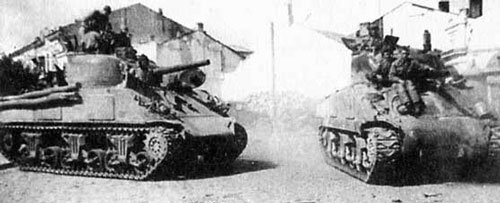 |
Elements of the corps cut the railroad 20km north of Molodechno during the morning of 2 July and the corps also took Krasnoe south of Molodechno, driving out elements of the 5. Panzerdivision by noon.
On 4 July 35th Guards Tank Brigade, supported by the 7th Guards Mechanised Brigade, assaulted across the river. |
|
They struck elements of the 5. Panzerdivision, two infantry battalions, and a small number of Tigers of the 505. Schwere Panzerabteilung. Despite tenacious German defence the corps soon took Molodechno.
By this time the Oslikovskiy Cavalry-Mechanised Group had reached the limit of their immediate advance, the cavalry needed rest and the mechanised and tank forces were short of fuel and supplies. They were over 250km from their supply depots.
|
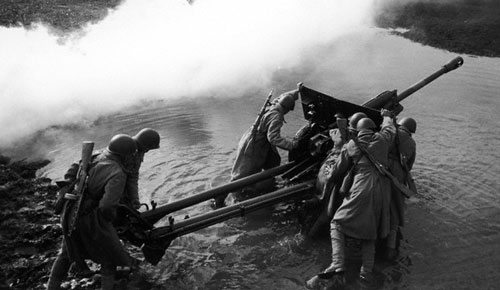 |
Phase one of the operation was over, but more fighting was yet to come. The German reinforcements had started to arrive and gaps were being plugged, allowing the German to conduct a controlled withdrawal.
5th Guards Tank Army…
1st Mechanised Corps… |
Last Updated On Thursday, March 11, 2021 by Wayne at Battlefront
|
|
|